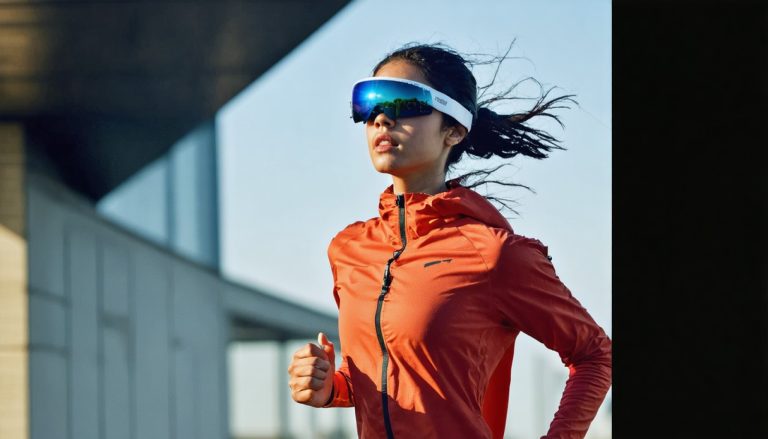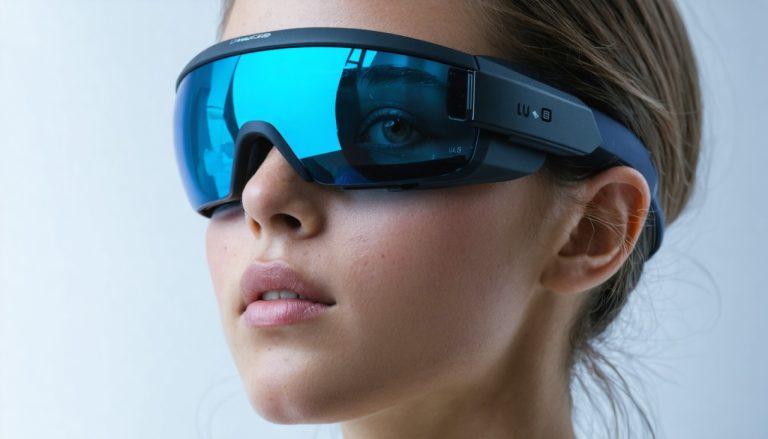
- Smart glasses like the ENGO 2 are set to revolutionize fitness monitoring by providing real-time holographic readouts of vital metrics such as pace and heart rate.
- The glasses transform data from devices like the Garmin Fenix 8 into an immersive experience, enhancing athletic performance with just a glance.
- Despite their lightweight design (36–41 grams) and a robust 12-hour battery life, challenges remain in terms of fit, comfort, and gesture control interface.
- The center of gravity can cause discomfort and disrupt focus, while gesture controls may misinterpret commands, necessitating further refinement.
- Future advancements could integrate additional features such as audio, AI feedback, and real-time camera capabilities, pushing the boundaries of tech-assisted fitness.
- As these technologies gain traction, fitness enthusiasts must decide whether to embrace smart glasses or rely on traditional fitness trackers.
At the crossroads of burgeoning technology and athletic ambition stands a sleek pair of smart glasses, poised to redefine the landscape of fitness monitoring. This week, as a dedicated runner and tech enthusiast, I experienced a tantalizing glimpse into this future by donning the ENGO 2 AR glasses, a product that hints at significant strides in sports technology, albeit with room for refinement.
Imagine barreling up a steep hill, sweat beading on your brow, while subtle holographic readouts in the corner of your vision reflect your pace, heart rate, and every vital metric. Such is the promise of these revolutionary spectacles, which tranform data from a Garmin Fenix 8 into an immersive, real-time experience. While the hardware is still evolving, the potential to enhance physical performance simply by glancing forward is exhilarating.
The ENGO 2 glasses—the result of thoughtful design prioritizing lightweight comfort—evoke curiosity and speculative excitement about their potential applications. Weighing a mere 36–41 grams, these lenses are almost feather-like compared to tech-heavy alternatives. Yet, their lightness does not come with compromise; they boast a robust 12-hour battery life, suitable for marathon sessions or enduring cycling treks.
Despite these advancements, the journey towards perfection is still ongoing. The weighty center, balanced precariously over nose pads, can jolt the wearer out of their focus with every bounce. Often, stats hover at the periphery, obstructed when the fit falters. With integral components housed prominently on the bridge, users must adapt and refocus, a process inconducive to the fluidity vital in demanding runs.
Wandering data fields using gesture controls can leave runners waving comically mid-stride, owing to a sensor that sometimes misreads commands. Though innovative, this interface must refine its intuitiveness and responsiveness to enhance the user experience and functionality.
Notwithstanding these hurdles, the quest to seamlessly integrate augmented reality into fitness remains vibrant. Other major tech players teeter on the cusp of breakthrough, hinting at future spectacles that meld health-monitoring prowess with holistic technology integration—audio prompts, AI-enhanced feedback, even real-time camera functionalities—all beckoning from the horizon.
Could this vision of tech-assisted athleticism catalyze a new era in personal fitness? The idea tantalizes: runners empowered with a heads-up display, liberated from the constant glancing at watches, eyes trained keenly on the path ahead. Yet, the decision lies with the athletes themselves. Will they embrace these tools to enhance their routines, or remain loyal to trusty fitness trackers?
As smart glasses edge closer to mainstream acceptance, they pose a provocative question to every fitness enthusiast, a question that is both invitation and challenge: what could be achieved if your performance metrics were literally always in view?
Smart Glasses and Fitness: Are We Entering a New Era of Health Monitoring?
Overview of ENGO 2 AR Glasses
ENGO 2 AR glasses represent an exciting development in the intersection of technology and fitness, offering athletes a glimpse into a future where performance metrics are directly in their line of sight. While the technology holds immense promise, it’s essential to examine both its potential and current limitations to understand its impact better.
How to Maximize the Use of ENGO 2 AR Glasses
1. Optimizing Fit: Proper adjustment of the nose pads and temple arms can significantly enhance comfort and display stability. Ensure a snug fit to minimize data field distortion caused by bouncing during intense workouts.
2. Gesture Control Mastery: Practice in a safe environment first to familiarize yourself with the gesture controls, reducing frustration during actual runs.
3. Battery Management: Regularly charge the glasses post-usage to maintain the 12-hour lifecycle, and ensure they’re fully charged before embarking on longer activities.
4. Pairing with a Compatible Device: Make sure your smart watch, like the Garmin Fenix 8, is compatible and up-to-date with software to ensure seamless data transfer.
Real-World Use Cases
– Running and Cycling: Offers real-time data visualization without needing to break stride to glance at a watch.
– Training Feedback: Immediate visual feedback on heart rate and pace can help adjust exertion levels accordingly for optimal training zones.
Market Forecast and Industry Trends
With an anticipated growth in wearable technology, smart glasses are expected to become integral to fitness routines. By 2025, the augmented reality market in sports is projected to grow significantly as consumer interest in high-tech health monitoring increases.
Pros and Cons Overview
Pros:
– Feather-light design enhances wearability.
– 12-hour battery life for extended activity tracking.
– Instantaneous feedback helps maintain focus on performance.
Cons:
– Potential discomfort from the unbalanced weight over the nose.
– Gesture controls can be unresponsive or misinterpret commands.
– Price point may be high for casual users.
Expert Insights and Predictions
Tech futurists suggest that as hardware advances and integration with AI improves, smart glasses could eventually replace traditional fitness trackers. The addition of features like AI coaches and real-time camera functionality could transform athletic training and competition.
Controversies and Limitations
There are ongoing debates regarding privacy with wearable tech, especially with devices that integrate cameras and sensors. Users should consider the implications of sharing their data and ensure they understand how and where their information is stored.
Quick Tips for Prospective Buyers
– Consider Usage: Evaluate how often you’ll use such high-tech gear, particularly for competitive athletes versus casual fitness enthusiasts.
– Try Before You Buy: If possible, test the glasses to ensure fit and functionality align with personal preferences and needs.
– Stay Updated: Regularly check for software updates that may improve usability and performance.
Conclusion
The advancement of ENGO 2 AR glasses and similar technology marks an exciting step toward seamless health monitoring. While the technology is still maturing, it offers an intriguing proposition for athletes seeking to enhance their training.
For those interested in learning more about augmented reality in fitness, explore resources on Garmin and ENGO.
By understanding both the potential and limitations of such technology, athletes can make informed decisions on incorporating them into their routines while remaining mindful of emerging trends and updates.



